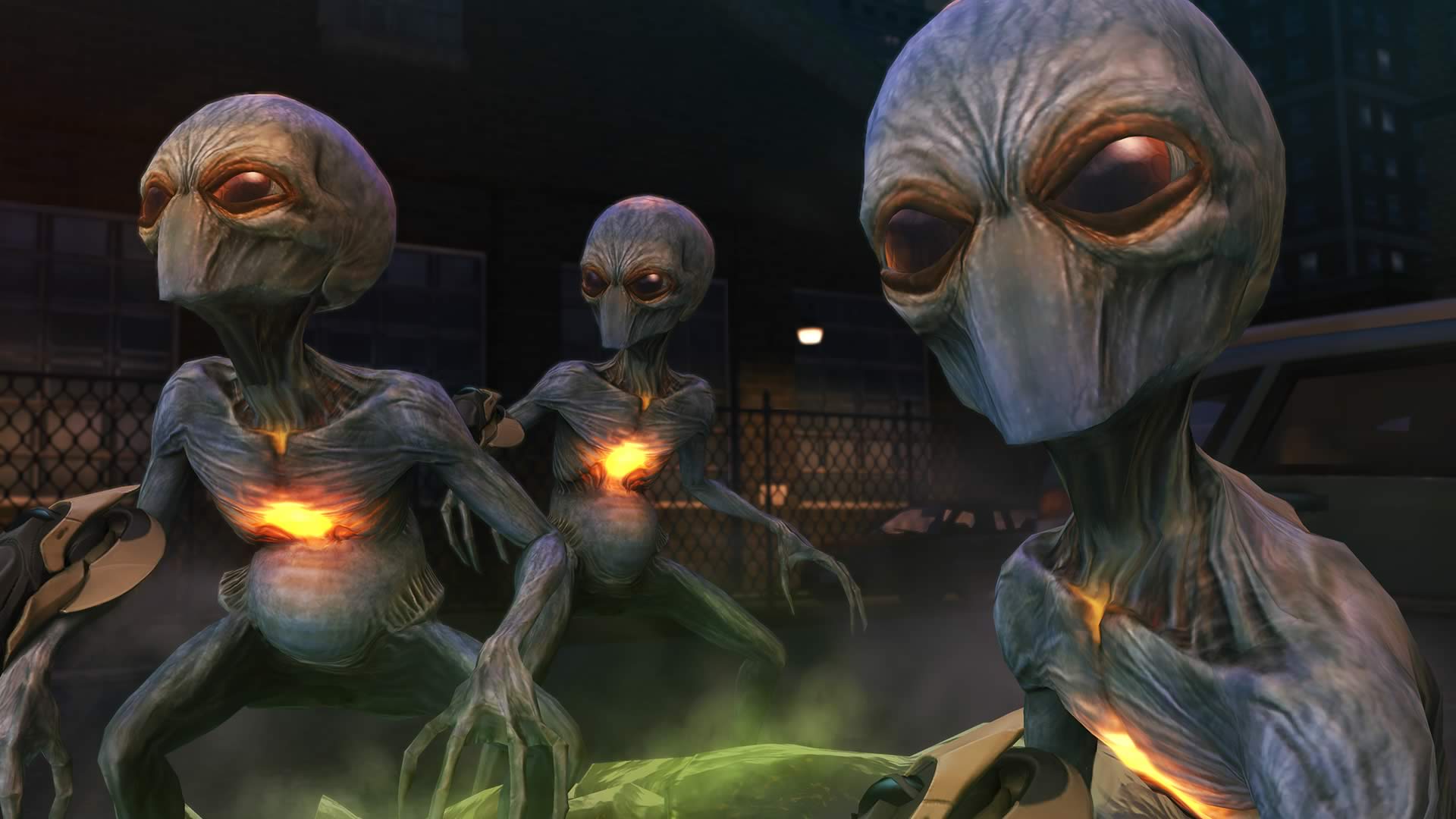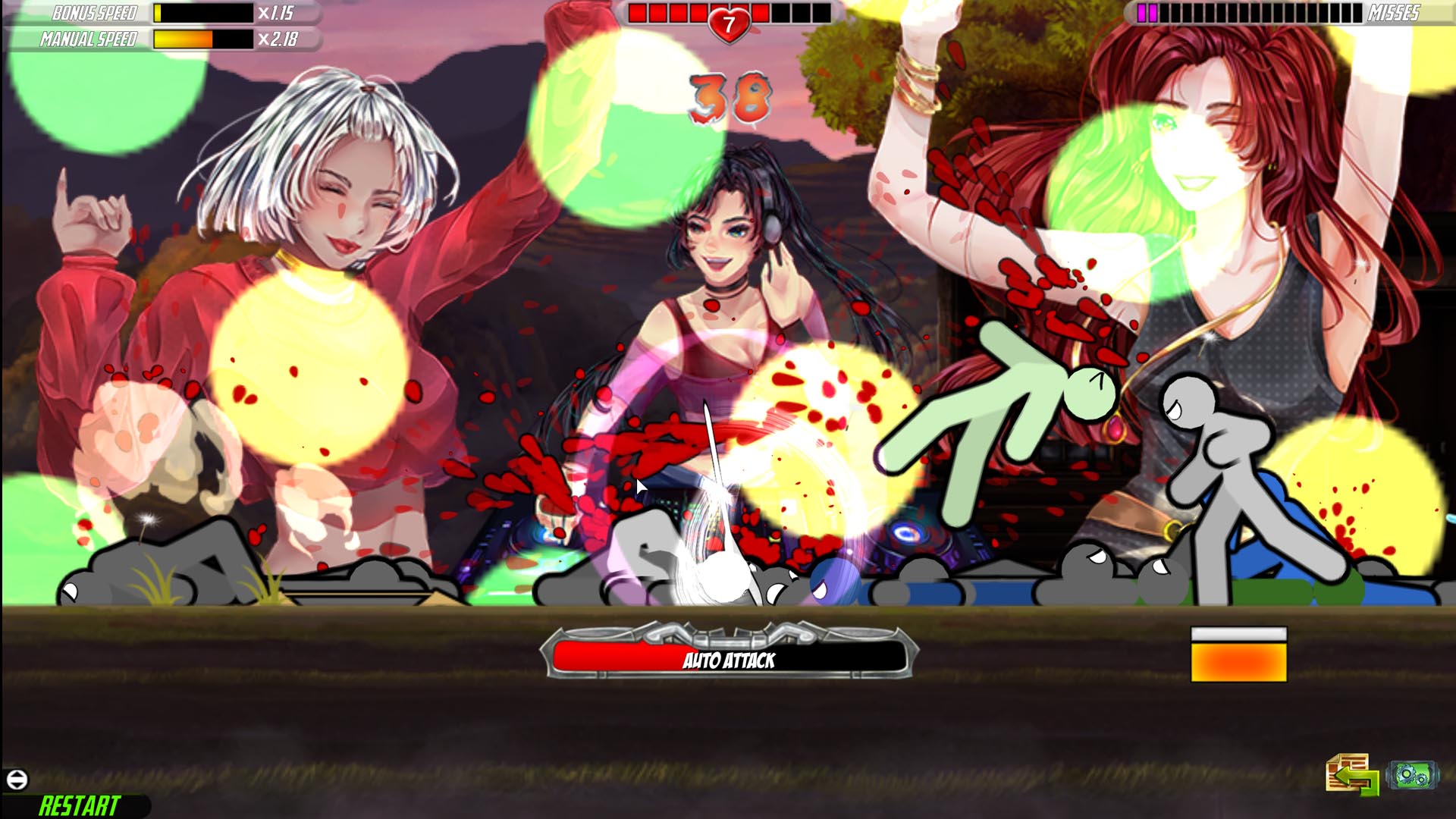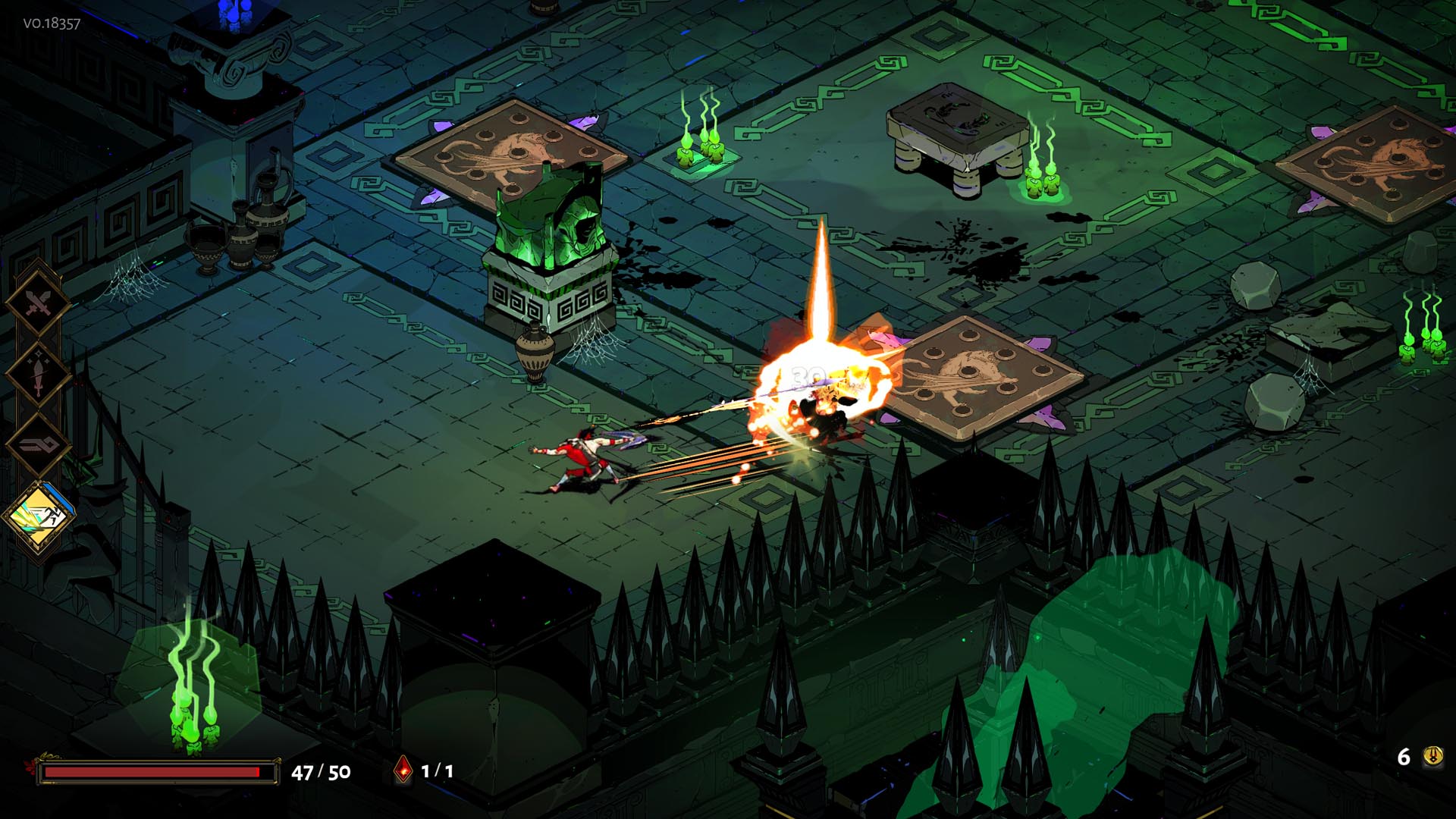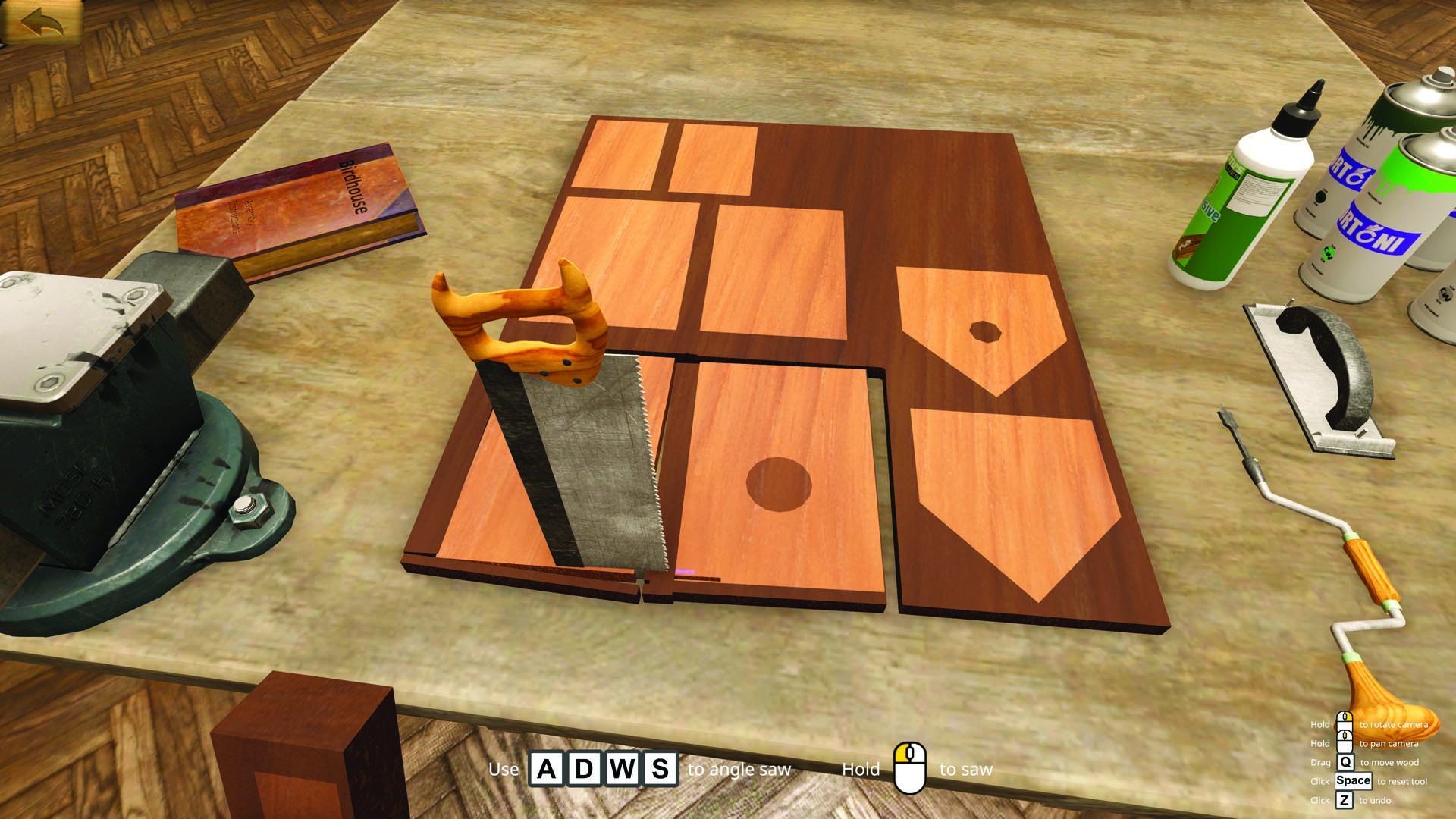PC Gamer plays: XCOM, One Finger Death Punch 2, Hades, and Woodwork Simulator
Aliens, hell, and birdhouses.

In the monthly 'now playing' section of PC Gamer magazine we spend a few pages discussing the games we've been playing recently—good or bad. Sometimes they are old-ish games we've been meaning to reinstall for ages, like XCOM. Sometimes they're strange meditative woodworking sims because, sometimes in life, you've just gotta build a nice birdhouse. This is also the last thing former UK editor-in-chief Samuel Roberts wrote before departing to some strange otherworldly plane called 'Brighton'.
Let us know what you're playing at the moment in the comments.
The social politics of naming your XCOM: Enemy Unknown squad—Samuel Roberts
This is my last Now Playing for PC Gamer. In fact, it’s the last thing I’m writing for PCG full-stop, at least for now. You never know, I might write a Now Playing for issue 400, before complaining about the cover price on Instagram (this is an inside joke).
An office PA annoyingly threw all my old PC Gamer issues out, so I’ve been perusing the few I’ve got at home. I’m reading them while I’m supposed to be packing to move to Brighton. We did slightly too many lists when I was editor, but damn, each issue was packed with features. I think I gave editing this magazine a solid shot, for a 25 year-old with no qualifications who didn’t know what he was doing. I give my editorship 81 per cent. It was no Dragon Age 2.
Anyway, here’s a filthy secret—I’ve been denying myself a proper XCOM 2 campaign since the game released, because I’ve never finished an Enemy Unknown campaign with the Enemy Within stuff installed. That is, with the mechs, deadly new aliens, that sort of thing. I thought I should do that before throwing myself at XCOM 2, with its nine million things to micromanage. I’m enjoying it, but because I’ve loaded an old save file, it’s presenting a few dilemmas.
Naturally, when I play XCOM, I rename all my soldiers to people I know. But there are a few problems with this. For example, my ex-girlfriend is my best sniper. I could just rename her, but I feel it breaks the theatre of the game to do that. So what do I do? Get her killed on purpose? She’s a good sniper, so it’s a tough call. And Enemy Within is actually a touch harder than Enemy Unknown was. Now, her and my current girlfriend, a new recruit, are on the same squad. It seems wrong.
The other problem is I don’t really know some of the other people who are in my 2014-era XCOM squad any more. And yet, I’m sending a bunch of them into battle. When should or shouldn’t you name a game character after someone from your real life? To me, there’s a kind of invisible line you cross in your head when it’s someone you barely know, which is why I only pick people I regularly interact with.
The biggest gaming news, reviews and hardware deals
Keep up to date with the most important stories and the best deals, as picked by the PC Gamer team.
And, annoyingly, I’m running out of those. My good friend Dave was just killed in service by one of the deadly guardian aliens. Now I need to cycle in someone new from the barracks. I ask, do I know anyone else? I mean, if we’re getting down to acquaintances or people I sometimes chat to in corridors, it feels like I’m missing the point. Soon I’ll have to add people who want me to join their network on LinkedIn.
XCOM underlines the fact that I only know about 20 real people, and that’s it, which is actually probably true for most people over 30 when they really think about it. Anyway, that’s my last, frivolous Now Playing, making an arbitrary point about something I could avoid entirely by renaming everyone and starting again. It’s been a pleasure writing and editing for you.
Finding beauty in One Finger Death Punch 2—Phil Savage

Lots of people will tell you that how a game plays is all that matters, and that’s an admirable attitude that I’d love to say I agree with. In practice, though, I’m a snob. You may have crafted the stickiest, most entertaining core loop of all time, but if it’s attached to an ugly game, I’m probably not going to play it.
There is one exception, and it’s One Finger Death Punch. It’s a brilliant two-button action game in which you, a kung-fu stickman, beat down hundreds of attackers. If they attack from the right, you press the right-mouse button. If they attack from the left, you press the left- mouse button. Sometimes attackers will swap sides, or require more than one button press to take down, but that’s really about it. It’s compulsive—an elegant dance of precision button clicks that feels great to successfully pull off.
My one wish for the sequel was that it wouldn’t look like absolute ass. Unfortunately, One Finger Death Punch 2 is just as repulsive as its predecessor. Maybe even more so. I buy it anyway.
It’s not that the art is ugly—although it is—as much as there’s no coherent aesthetic. It’s a grab-bag of styles, reminiscent of ’70s kung-fu movies, early-’00s Newgrounds games and pretty much any era of DeviantArt. The UI icons are uninformative. The fonts are atrocious. The faux- Chinese accent of the narrator is questionable at best. It’s an unpleasant space to explore.
And yet, it’s loads of fun. Ostensibly each level is the same—you fending off 100+ enemies without dying. Yet through the mix of different enemy types—bosses, brawlers, enemies that attack from range—each level feels like it has a specific combat flavour that makes it just different enough from the rest.
I think the frantic pace helps distract from how unpleasant I find its art. I’m not really looking at the level, just the incoming attack prompts shown at the bottom of the screen. Button mashing is certain death in One Finger Death Punch 2, and so—much like in a good rhythm action game—you tend to focus down on just the essential information. And in this limited view, the animations of the fighters even look quite graceful.
Then I win, and the ugly score screen comes into full view.
The spell is broken. I click on the next level regardless.
Going mad with (divine) power in Hades—Malindy Hetfield

I’ve recently started playing Hades again after having stayed away from it since launch. Supergiant Games is one of those precious few game developers whose games I will buy sight unseen, but initially I thought that not even they could make me enjoy roguelikes more than I do. Which isn’t all that much.
Then something magical happened—I got better. I know, I know, that’s the point of this type of game. And yet I often feel like roguelikes come with a skill floor that’s just too high for me to not be frustrated, and frustration gives me no reason to continue playing. But the updates kept rolling in, and with them a variety of skills and ways to meaningfully combine them that made me feel like I could perhaps actually do this. My entire journey with Supergiant titles has been like this, anxiously saying, “I’m probably not the core audience for this,” before completing the purchase anyway and subsequently falling in love.
Hades feels like a culmination of everything that the studio has done before. Combat in Bastion now feels like a slower version of Hades—a speed that takes a further dip in Transistor in exchange for the meaningful skill combinations that I now appreciate so much. Additionally, Hades has the physicality and immediacy of Pyre, conveyed through stunning animation. I loved running in Pyre, and it’s the same here, paired with an incredible dodge that somehow manages to make me feel powerful while I’m running away.
More importantly, Hades is slowly eroding my idea of this mythical core audience, and reminded me that a genre actually doesn’t have to define a game’s difficulty. Revelations! I know I’m doing myself a disservice by limiting myself in my gaming tastes, but I know I wouldn’t have played this if my taste weren’t already “anything by Supergiant”.
Some aspects tickle my lizard hind brain in a way that feels like a dirty trick. During one run, for example, I bought a water basin on a whim, only to find it showed me my number of runs and total of slain foes. I swear I’ve never cared about high scores of any kind, and yet there it was—pride, unmistakably. The same is true for when I check the number of the furthest room reached, or when Zagreus mumbles to himself about never having made it this far before, a declaration which causes me to realise the same—almost inevitably stressing me out so much I die.
Since Hades is still in Early Access, these triumphs are oddly terrifying. What if a weapon in need of a nerf or a weakness in a boss enabled my success? What if all of this is a warm-up for some really difficult battles while I’m already dreaming of becoming the Hades esports champion 2020? Well, if I’m honest, it doesn’t matter. I haven’t squealed like this at the speed and excitement of a game in a long time.
Failing to build a birdhouse in Woodwork Simulator—Andy Kelly

The developer behind PC Building Simulator has released a playable prototype of its next project, Woodwork Simulator, which is exactly what you think it is. I’ve had my fill of novelty simulator games on PC, but this isn’t something that’s played for laughs—it actually lets you make things out of wood, and it’s way more compelling than I thought it would be.
I was absolutely hopeless at woodwork in school. Once I tried to make a CD rack and ended up with a shapeless wedge of pine with globs of hardened glue leaking out of the cracks. Several people laughed at it, including the teacher. I was alright at sanding, though. That thing might have been a mess and too narrow to hold a CD, but boy was it smooth.
So I went into Woodwork Simulator thinking I’d be able to make something decent, because videogames let you excel at things you’re otherwise shit at, right? But I was wrong. So, so wrong. Because this is a simulator in the truest sense, requiring a delicate hand and some actual manual dexterity.
You have a bunch of different tools to work with, and they all feel fantastic to use. You can saw, drill, plane, sand, varnish, paint, and even use a lathe. Sawing by pulling the mouse back and forth feels really tactile, and I love the attention to detail, like the little curls of wood that peel off the wood when you plane it. They’ve really nailed the finer details, which any great simulator should.
The wood is enjoyably malleable, letting you cut out any shape you like and glue the bits together to create, well, whatever you like. There’s a free mode for people who prefer to dream their own creations up, but I thought I’d ease myself in with one of the tutorials, a birdhouse, which the game declares to be easy. When I begin I see a large piece of wood marked with a template telling me which bits to cut out.
I find cutting out the various shapes that make up the birdhouse quite soothing. I stick a long, square piece of wood in the lathe to turn it into a smooth post, then I start gluing the pieces I cut out together. But I underestimate how gently and precisely you have to do this, and the end result is something that makes my CD rack look like a work of art.
But it’s really fun. The simple act of cutting wood and sticking it together to make things, without worrying about getting sawdust on the floor or wood glue on my fingers, is enough of a novelty to keep me playing—even if I’m making a mockery of the art of woodcraft. And it’s remarkable to think that this is an early prototype given away for free, because there’s a lot going on in here.
I still suck at woodworking, but at least here I won’t be mocked by my teacher and classmates.


